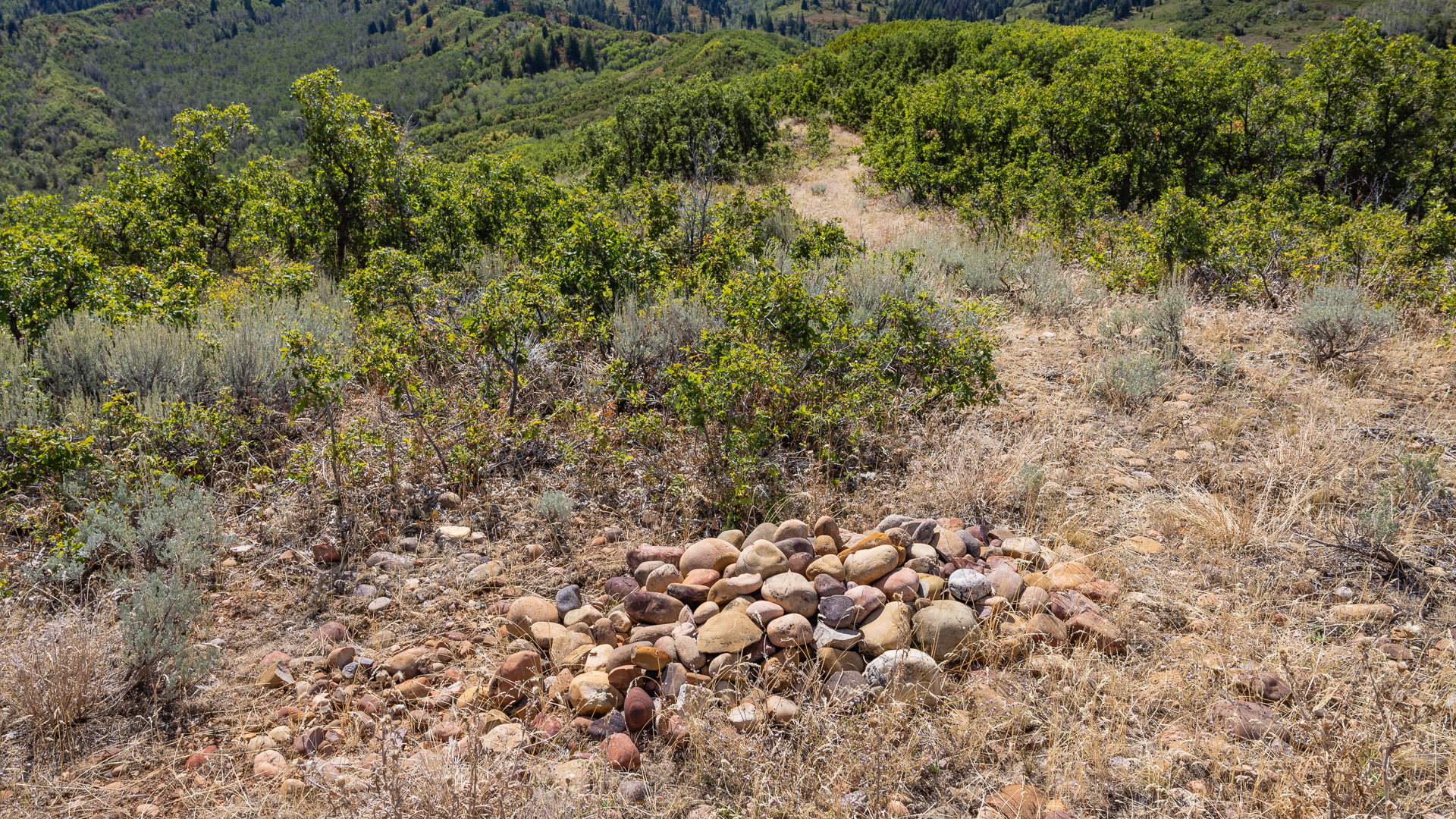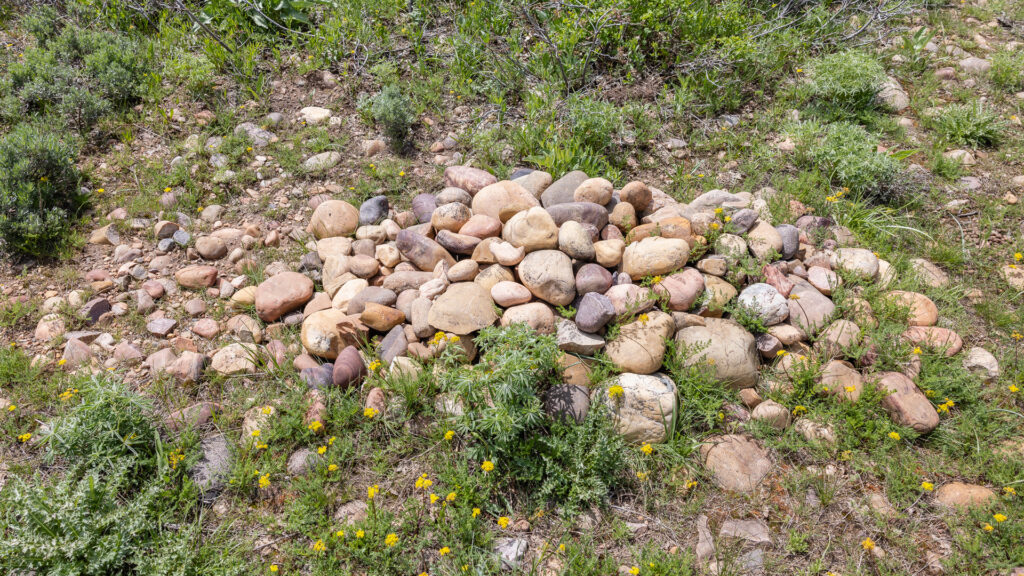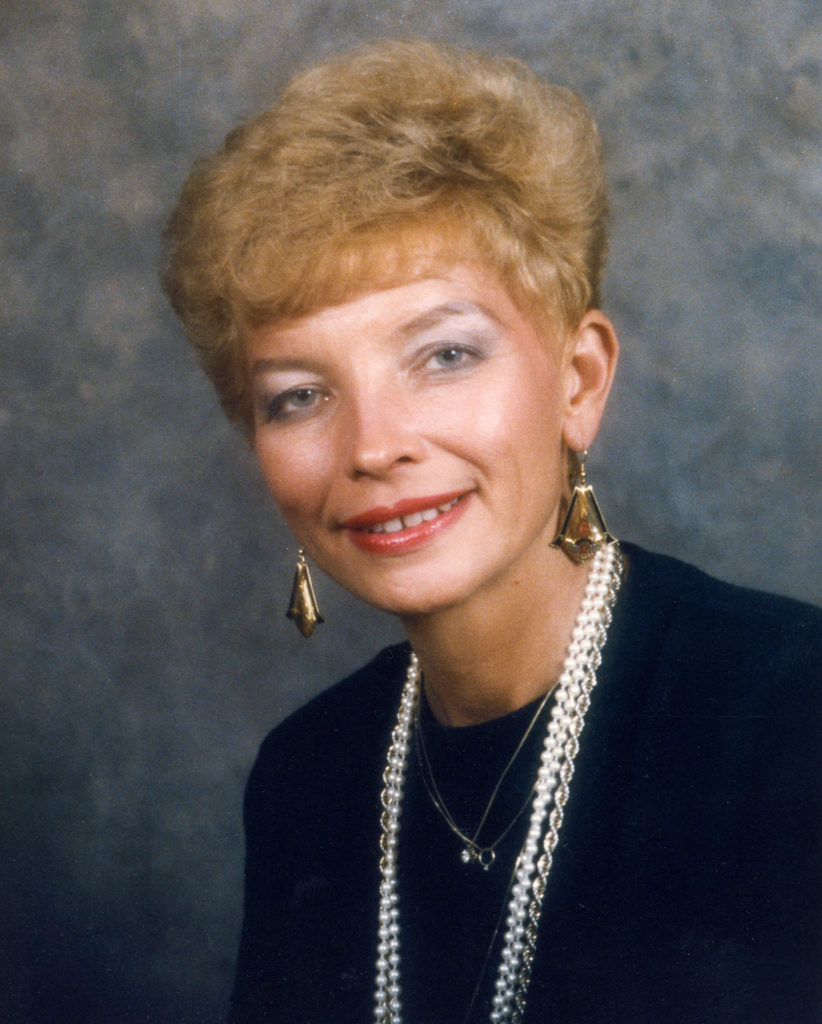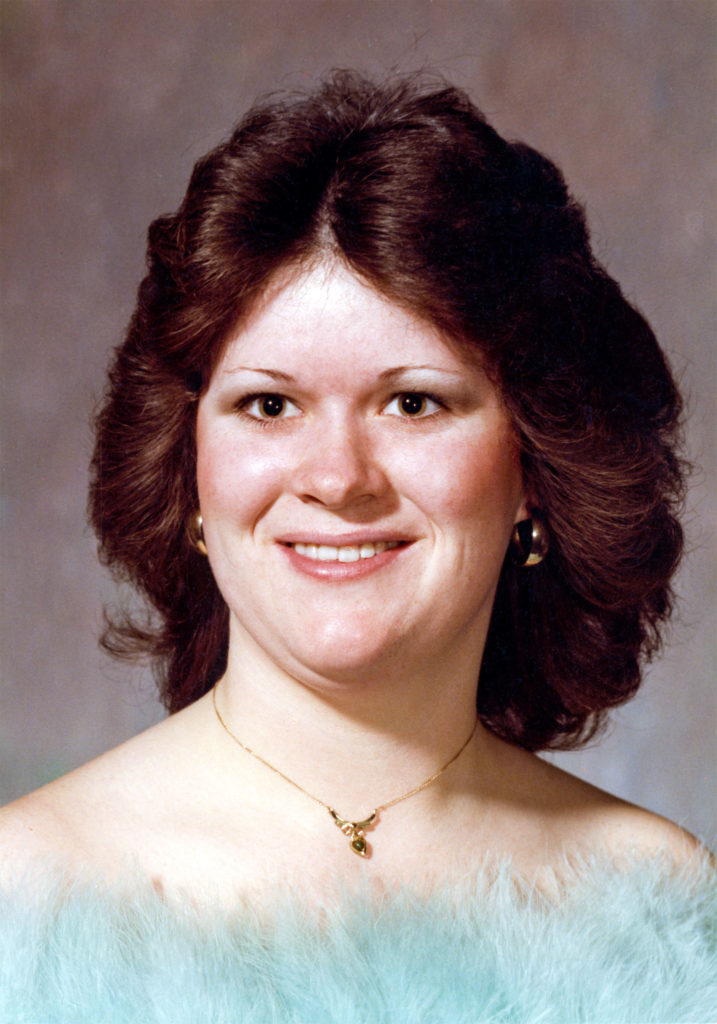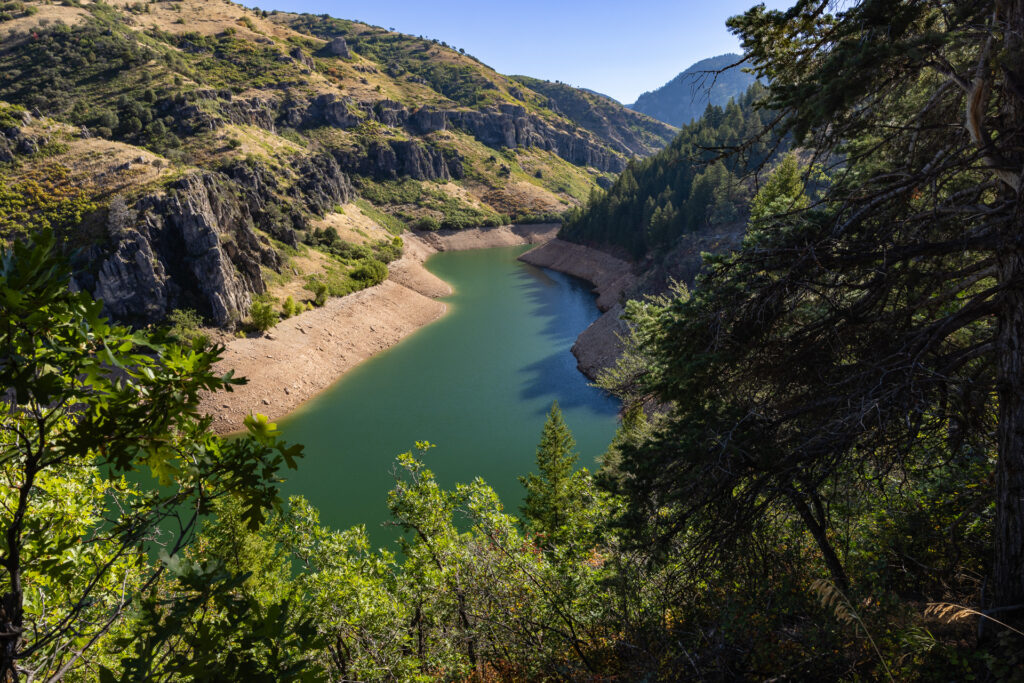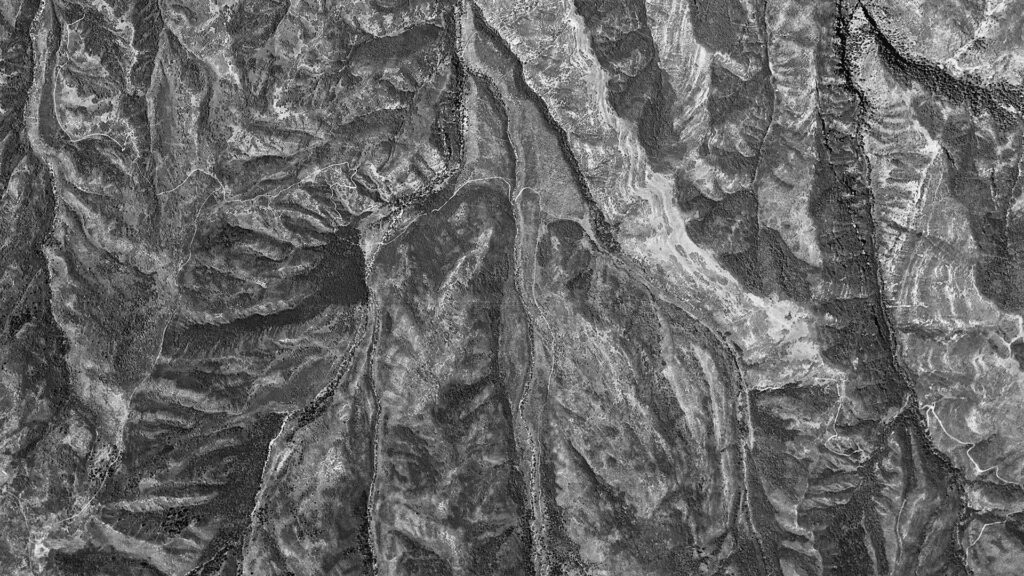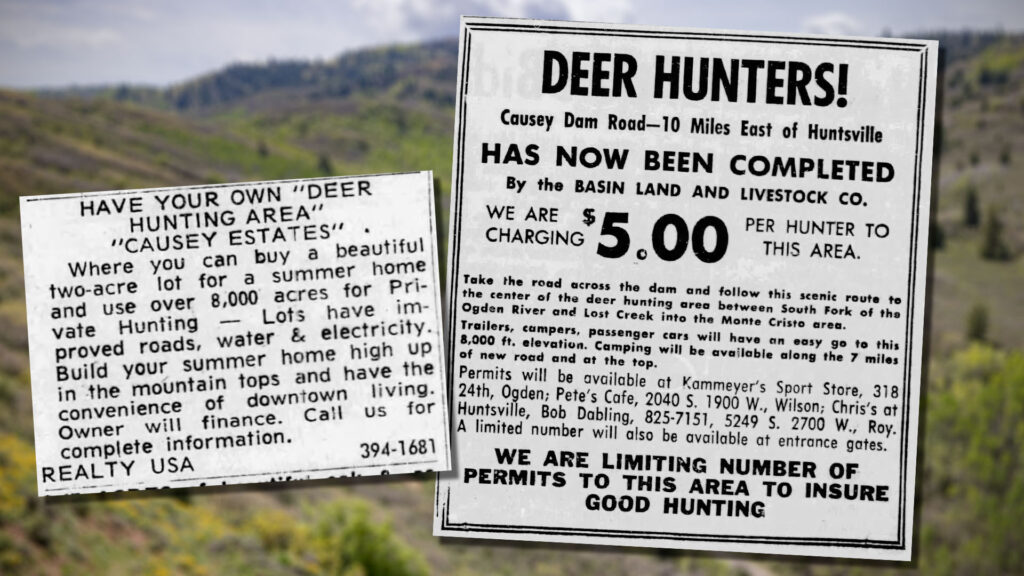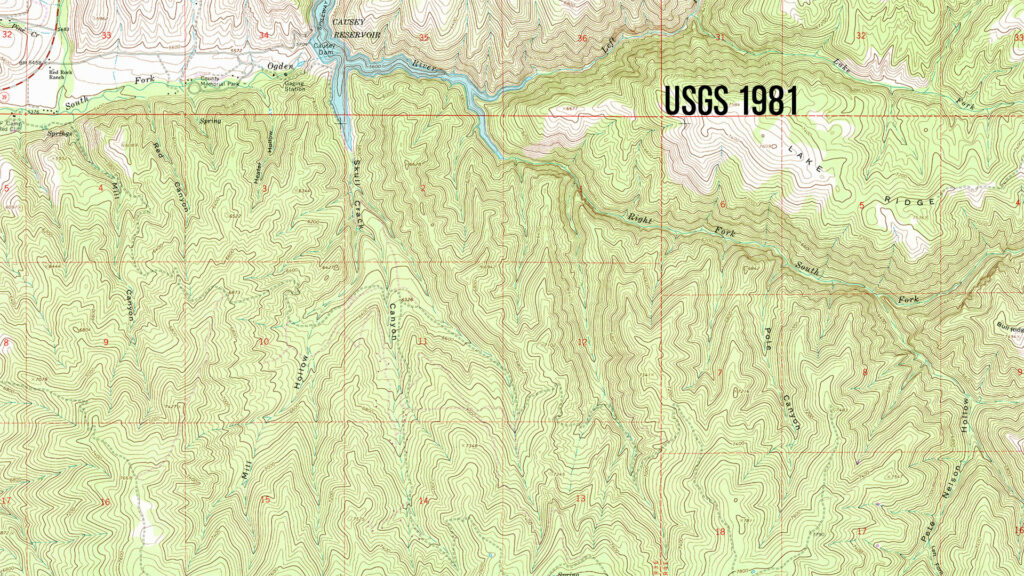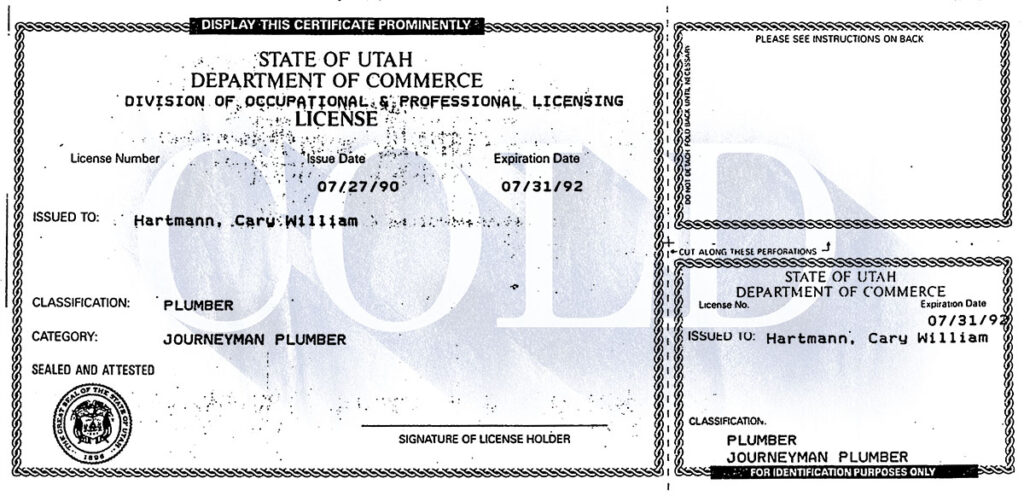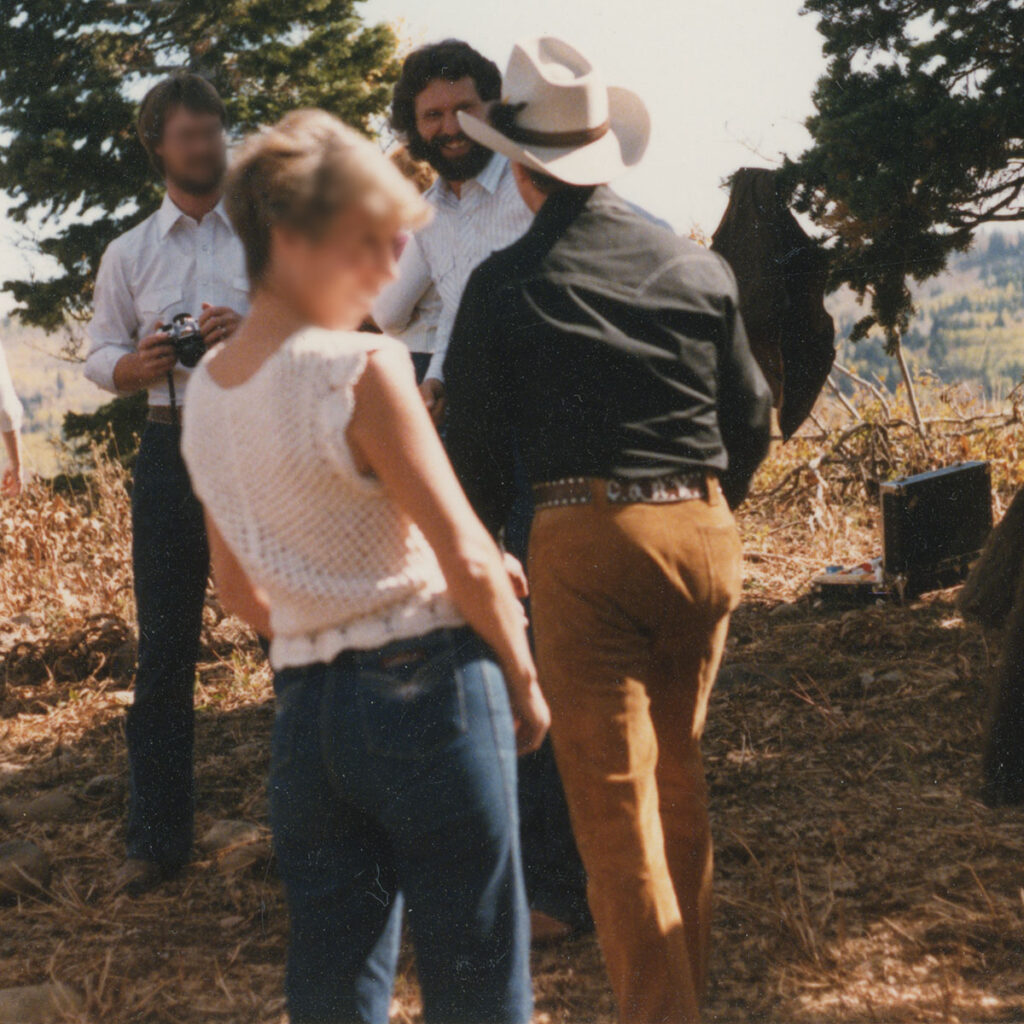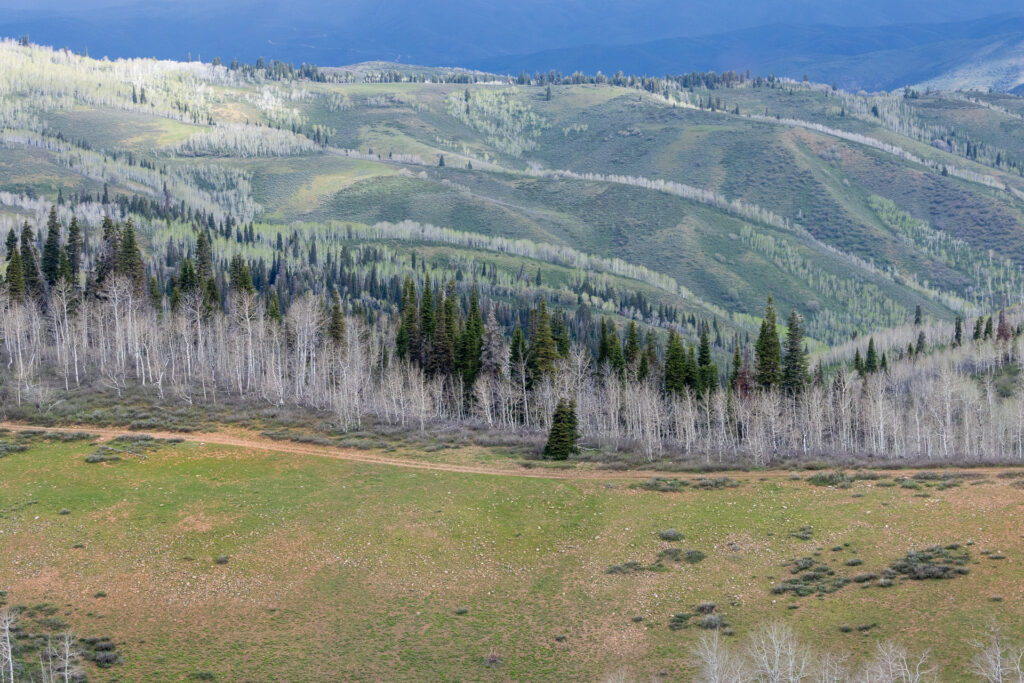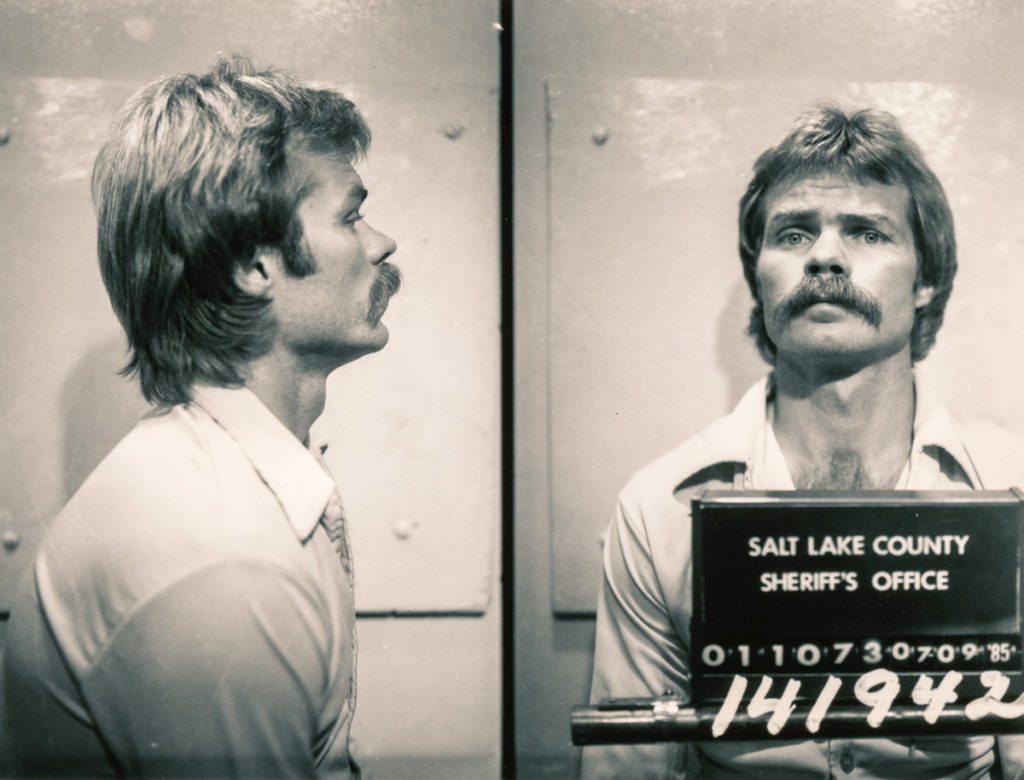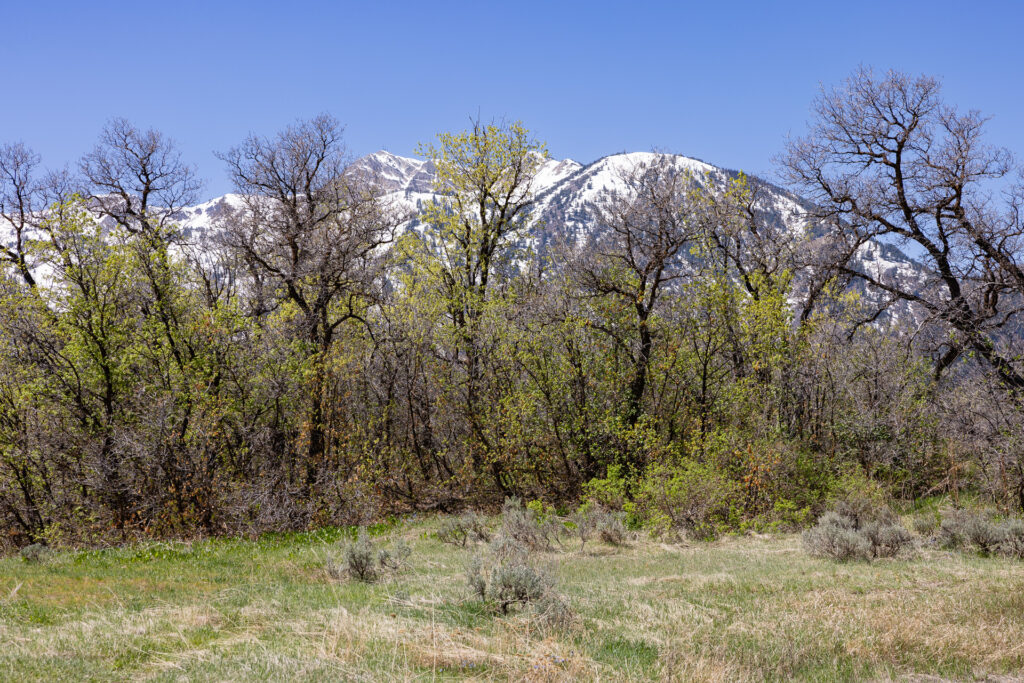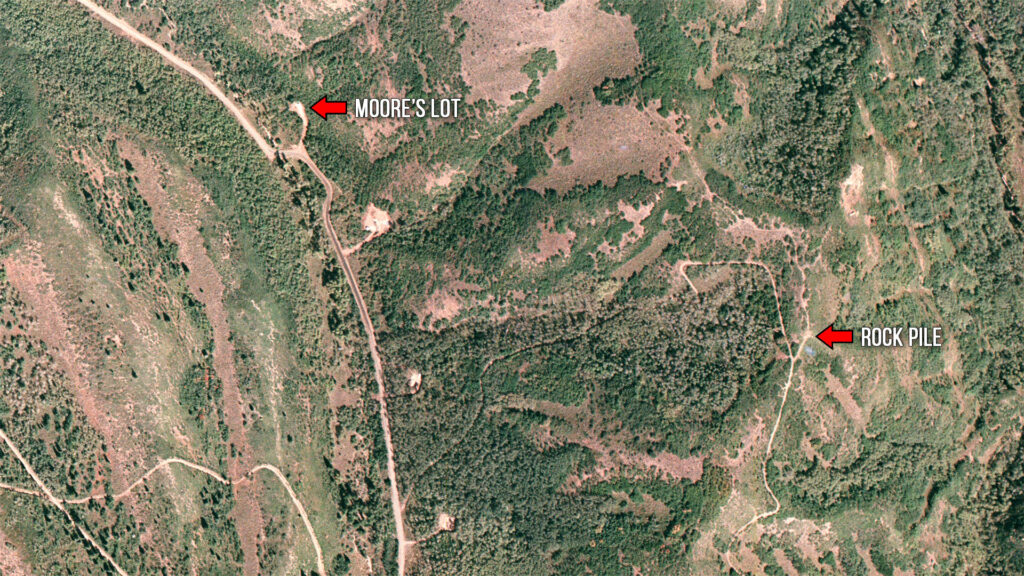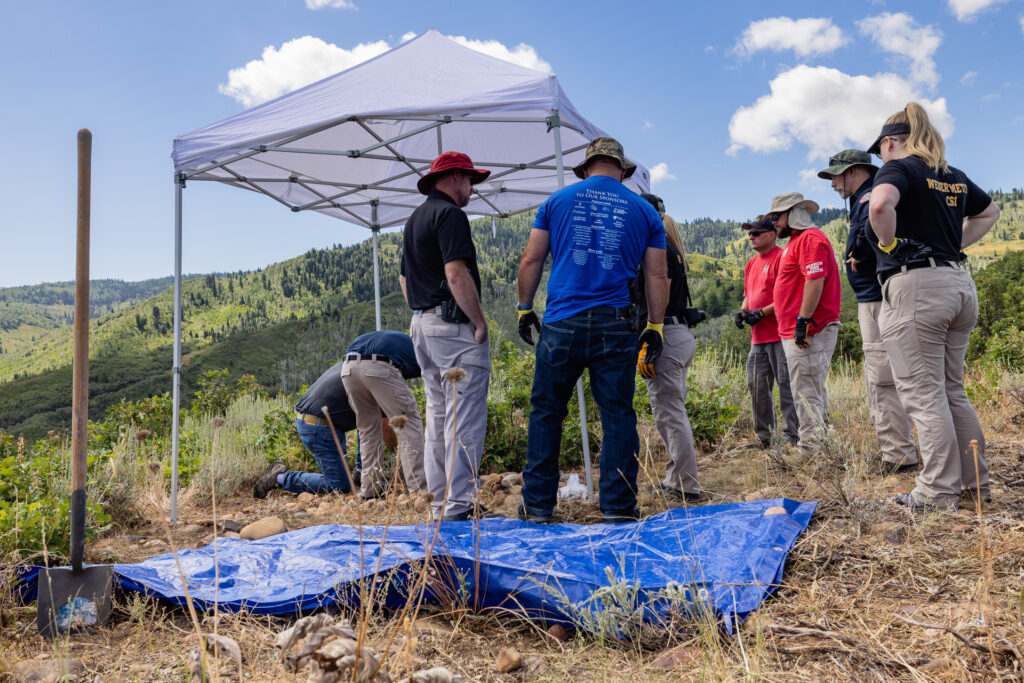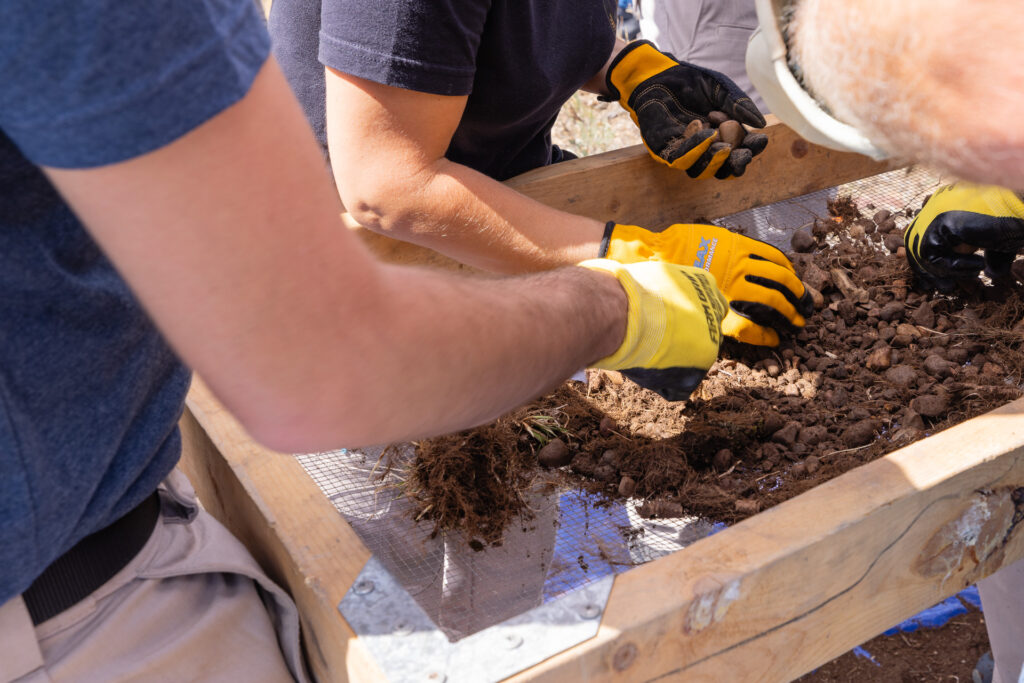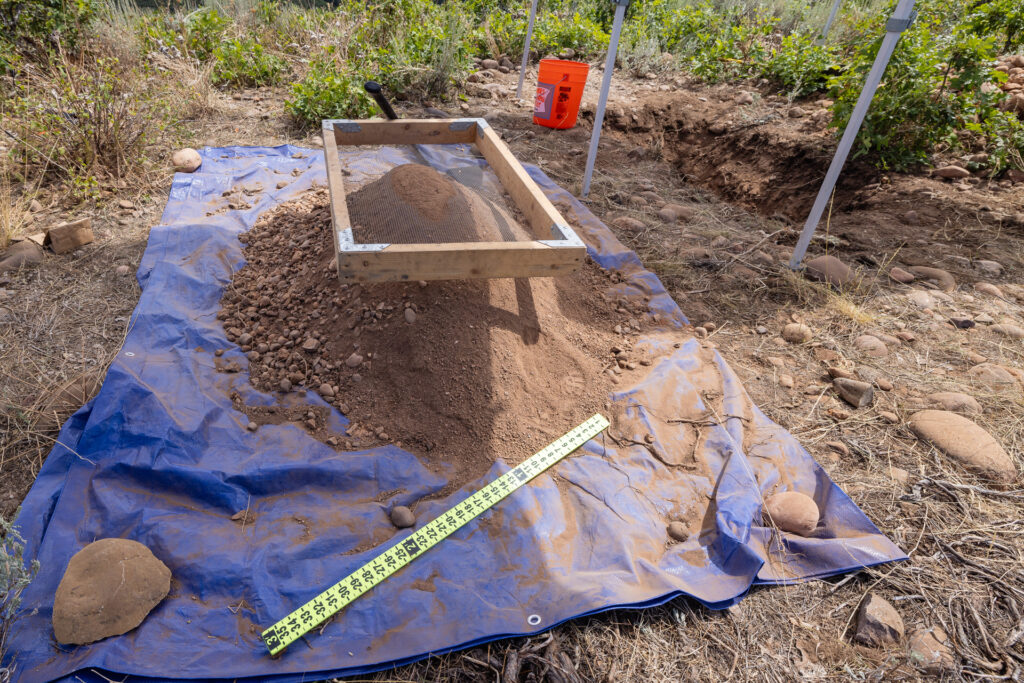Dave Cawley: Each swing of the pick brought a loud clank of metal against stone. Sweat dripped from the faces of the detectives who took turns heaving shovelfuls of dirt into an orange bucket. Next to them, standing over a blue tarp, CSI workers sifted loose dirt through a mesh screen, pausing to peer at any odd roots or rocks. What they really hoped to find were fragments of bone. Roy City police and Weber County crime scene investigators, along with search and rescue staff, conducted an excavation of a possible clandestine grave near Causey Reservoir in mountains of northern Utah on August 23rd, 2023. They were looking for skeletal remains, possibly those of Sheree Warren.
Jason Romney (from Aug. 23, 2023 recording): How many years has it been, Dave?
Dave Cawley (from Aug. 23, 2023 recording): Since Sheree?
Jason Romney (from Aug. 23, 2023 recording): Yeah.
Dave Cawley (from Aug. 23, 2023 recording): 38.
Jason Romney (from Aug. 23, 2023 recording): 38? Yeah, I would think after that time we might just be getting long bones, big bones.
Dave Cawley: Sheree Warren’s case, and these mountains that may hold secrets about her fate, have consumed my attention for quite some time. You’ve heard the result: the story of the search for Sheree is chronicled in COLD season 3. Through months and years of research, I honed in on this specific spot as a possible place to look for Sheree Warren’s remains. Circumstantial evidence suggests one of the two named suspects in Sheree’s disappearance could’ve known this place very well. There was also an outside chance this site could hold evidence related to the murder of Joyce Yost, the subject of COLD season 2.
These two cases, Sheree Warren’s and Joyce Yost’s, are likely unrelated, but they occurred in close proximity to one another, in space and time. Over the last nearly 40 years, they’ve bled into one another. We’ve now taken detailed looks at both in this podcast, and heard repeated references to Causey Reservoir.
Shane Minor: The Causey area’s about 20 miles east of Ogden, there’s a Causey Reservoir.
Stan Olsen (from May 24, 2004 police recording): Yeah, this is Causey Estates up here.
Bill Daines (from January 27, 2006 subpoena recording): Did you ever hunt in the Causey Reservoir area?
Rod Layton: Causey is a area up the canyon.
Jared Briggs (from December 15, 2006 Utah State Prison recording): And he scooped her body up and they drove to Causey.
Jack Bell: You got two reservoirs up there that are deep, Causey and Lost Creek.
Jack Hartmann (from January 27, 2006 subpoena recording): There’s some really steep trails going up to the righthand side off Causey.
Dave Cawley: That’s why Roy City police invited myself and several of my colleagues from KSL-TV, the Salt Lake City-based news station I work for, to watch as they excavated this site.
Dan Spindle (from August 23, 2023 KSL TV archive): Breaking news happening right now. Law enforcement agencies in Weber County are digging right now what appears to be at a burial site that might be connected to a four-decades-old murder case.
Dave Cawley: But if you’re not in Utah, or don’t watch the news here, you probably didn’t hear anything about this. So let me bring you up to speed. In this episode, we’ll review the evidence that points to the possibility of gravesite near Causey. We’ll go to the site of this dig, and I’ll share where the search for Sheree Warren stands, now that the dust has literally settled.
This is a bonus episode of COLD, season 3: The Causey Search. From KSL Podcasts, I’m Dave Cawley.
[Ad break]
Dave Cawley: Let’s begin with a recap of the Joyce Yost and Sheree Warren cases. Both had their start in the area of Ogden, Utah back in 1985. Joyce’s case came first. That April, a man Joyce had never met followed her home from a club late one night. Doug Lovell confronted Joyce in the carport outside her apartment in the city of South Ogden. Lovell sexually assaulted Joyce, kidnapped her and held her captive.
Joyce, fearing for her life, promised not to tell anyone what Lovell’d done if he just let her go. He did. When Joyce made it safety at home in the early morning hours, she called her sister. This is Joyce’s voice, explaining what her sister said.
Joyce Yost (from April 4, 1985 police recording): She says “well you call the police.” And I said ‘I really don’t want to be put through the humiliation.” … She said, in fact the more she heard from me, the angrier she was getting and she says “well, you call the police right now,’ or she said, “if you don’t, I will.” So, I said “I will.”
Dave Cawley: Joyce soon met with detective Bill Holthaus. She told him her story. Holthaus believed Joyce, and he arrested Doug Lovell that same morning on suspicion of rape.
Bill Holthaus: He looked at me with an expression that got my attention. … But it just was like it froze the moment. And he said “this will not go to trial.”
Dave Cawley: Through a series of mistakes and mishaps, Lovell found himself out of jail while awaiting trial that summer. He tried to hire two hitmen, but both fell through. So, in August, 10 days before the scheduled start of the trial, Doug Lovell crept into Joyce Yost’s apartment through a window, startled her awake and slashed her with a knife. Lovell then took Joyce away in her own car and hid her body.
Weeks later, at the start of October, Sheree Warren walked out of her work at the headquarters office for the Utah State Employees Credit Union in Salt Lake City. She told a coworker she was going to meet her estranged husband at nearby car dealership. Afterward, Sheree planned to take her young son to her parents’ house in the city of Roy. She never made it.
Carole Mikita (from October 5, 1985 KSL TV archive): Right now police say they’re investigating the disappearance but have very little to go on.
Ben Glover (from October 5, 1985 KSL TV archive): What we’re asking for is just to locate where she may be. Or any evidence to show that it, or indicate that there is maybe some foul play involved so we can do a, a different type of investigation rather than missing persons.
Dave Cawley: Roy City police at first focused on Sheree’s estranged husband, Charles Warren, thinking he might’ve killed Sheree over their ongoing divorce. Charles told Roy police detective Jack Bell he’d canceled his planned meeting with Sheree at the dealership on the evening of her disappearance and instead went jogging, a weak alibi detective Bell was never able to corroborate.
Jack Bell: I wish he hadn’t looked so guilty to start with, but he did.
Dave Cawley: Charles Warren wasn’t the only suspect, though. Police also came to wonder if a former Ogden City police reserve officer named Cary Hartmann might’ve had something to do with Sheree Warren’s disappearance. Cary and Sheree had been dating.
Six weeks into the investigation, Sheree’s car unexpectedly surfaced behind a casino in Las Vegas, Nevada.
Jack Bell: That opened up a whole new can of worms. How did it get there? Which one of these two birds that I’m looking at have the opportunity to get it down there?
Dave Cawley: As Roy police were trying to answer that question, Doug Lovell revisited Joyce Yost’s body somewhere in the mountains, burying Joyce to prevent anyone from finding her. Then, snow fell, blanketing those same mountains. In December, Doug Lovell stood trial for raping Joyce Yost. She didn’t show up to testify. The jury convicted Lovell anyway and sent him to prison, but not for murder. Without a body, South Ogden police were unable to link Joyce’s disappearance to Lovell. Without a body, Roy police were unable to say what might’ve happened to Sheree Warren.
These two separate cases were still both under investigation when, in April of 1987, an anonymous man called Roy City and the Weber County Sheriff’s Office to report finding a woman’s body in the mountains near Causey Reservoir.
Sheli Tracy (from April 3, 1987 Weber County dispatch recording): —a body?
Anonymous caller (from April 3, 1987 Weber County dispatch recording): Yeah, a body that I, that I, that I just happened across way up, y’know it’s way out, y’know it’s not in the communities or anything. It’s way out in the hills.
Dave Cawley: Causey is way out in the hills, about 20 miles east of Ogden and its suburbs of South Ogden and Roy. But the land around Causey is rough and remote. Investigators needed more specific information if they ever hoped to find the body. The anonymous caller wasn’t willing to help.
Sheli Tracy (from April 3, 1987 Weber County dispatch recording): Can I get your name?
Anonymous caller (from April 3, 1987 Weber County dispatch recording): No, I’m not interested in leading search parties or anything like that.
Dave Cawley: Weeks later, a witness told police he’d bumped into Sheree Warren’s boyfriend, Cary Hartmann, on the mountain behind Causey four days after Sheree disappeared. And detectives learned several of Hartmann’s close personal friends owned property in Causey Estates, a cabin community near the reservoir.
Dave Moore: We had to have a key. There was a gate down right at Causey Reservoir.
Dave Cawley: One of those friends, Dave Moore, was Cary’s alibi for the night Sheree disappeared.
Dave Moore: At the time I didn’t, had no idea that he was using me as a alibi.
Dave Cawley: Another those friends, Brent Morgan, told police Cary had borrowed his key for the gate at Causey Estates shortly before Sheree vanished.
Brent Morgan: Back then there wasn’t a lot of people up there.
Dave Cawley: Police searched around Causey during the spring and summer of 1987, hoping to find the body the anonymous caller had mentioned. Those searches came up empty.
Brent Morgan: You take where he had my key, if he had access up there and could go up and down the roads, you can find the right place where you can 1-2-3 heave-ho and it’s gonna be in a spot where people aren’t gonna go.
Dave Cawley: Cary Hartmann, I should note, ended up in prison but not because of anything to do with Sheree Warren. Ogden City police arrested him as a suspect in a series of home invasion sexual assaults around the same time as the anonymous call and the searches around Causey. A jury convicted Hartmann in one of those cases.
Years later, another clue emerged pointing toward Causey, this time in the Joyce Yost case. In 1991, Doug Lovell’s ex-wife Rhonda Buttars told police on the night Lovell killed Joyce Yost, he took her “up by Causey.”
Rhonda Buttars (from May 1, 1991 police recording): And he said he made her drive up the canyon and they went up by Causey. … And got her out of the car and walked up this hill and if wasn’t very far off the road. … And he said he buried her the best he could.
Dave Cawley: Rhonda Buttars’ confession helped prosecutors secure a capital murder charge against Doug Lovell. Buttars wore a wire into the Utah State Prison and captured audio of her ex-husband as he described burying Joyce Yost in the mountains, covering her with leaves.
Doug Lovell (from January 18, 1992 recording): The only thing I’m nervous about is that one time that caller called it. I remember seeing it on TV. … The way they projected this was “we think we know where the body of Joyce Yost’s remains are.”
Dave Cawley: Lovell cut a plea deal, hoping to avoid the death penalty by promising to take police to Joyce Yost’s grave. In the summer of 1993, he led police to a mountainside east of Ogden. It held no signs of human remains. It was also nowhere near Causey.
Former South Ogden detective Terry Carpenter told me he believes Lovell lied about where he buried Joyce Yost.
Terry Carpenter: She is someplace else and honestly to this day, I believe Sheree Warren’s with her. Otherwise, if we go up and dig and find Joyce and find Sheree, that negates all the agreements that we’ve had with him and not executing him. And he knows that. So he’s not going to take us to Joyce.
Dave Cawley: I’ve looked for evidence that might link Doug Lovell to Sheree Warren. I’ve not found any. Lovell himself denied having ever met Sheree Warren when this speculation first surfaced 30 years ago. But there are those who hold to this theory, even today.
In 2004, Weber County investigators flew over the mountain behind Causey in a state helicopter. They were operating on the assumption Cary Hartmann had killed Sheree Warren and left her body somewhere near Causey.
Shane Minor (from May 25, 2004 police recording): This would’ve been the road I think he had access to … there’s unlimited places where he could’ve dumped her along here.
Kent Harrison (from May 25, 2004 police recording): Hard to think like a bandit, y’know. Would you’ve, you’ve picked a characteristic turn or rock or tree or something to, as a landmark?
Dave Cawley: A year-and-a-half later, a detective named Shane Minor questioned Cary Hartmann about Sheree Warren’s disappearance. Minor asked Hartmann directly if he’d killed Sheree and taken her body to Causey.
Shane Minor (from October 20, 2005 police recording): Did you kill Sheree?
Cary Hartmann (from October 20, 2005 police recording): No.
Dave Cawley: Hartmann said he didn’t have any idea what’d happened to Sheree.
Shane Minor (from October 20, 2005 police recording): Do you know if she was placed in an area above Causey Estates?
Cary Hartmann (from October 20, 2005 police recording): No, I don’t have any idea.
Dave Cawley: A year after this, in 2006, a prison informant started talking to police about Joyce Yost. He said Doug Lovell had drawn him a map of the place where he’d left Yost’s body.
Jared Briggs (from December 15, 2006 Utah State Prison recording): This is the lake, there’s some gates up here and some property.
Dave Cawley: The informant claimed Lovell had taken Joyce Yost to Causey Reservoir.
Jared Briggs (from December 15, 2006 Utah State Prison recording): See these circles here? Uh, he’s telling me this is Huntsville here, the Huntsville area. Uh, and this is Causey.
Dave Cawley: Your head’s probably spinning by this point. It’s so much to keep track of, I know. Not all of these leads are credible. Sorting fact from fiction remains a major challenge in these two cases. But what I hope you’re seeing is a lot of circumstantial evidence points toward Causey Reservoir as an important landmark in the disappearances of Sheree Warren and Joyce Yost.
My job involves taking scattered fragments of a story, spreading them out and putting them in order. Sometimes the individual puzzle pieces don’t look like much on their own. It’s only when they’re assembled that a picture emerges. If done well, the story that comes out of this process should draw as close to truth as I can possibly get it.
Perfect truth is nearly impossible to find. Often, holes remain. Unanswered questions. Like, where is the body the anonymous caller reported finding near Causey, and why couldn’t anyone find it? I’ve struggled to come up with a satisfactory answer. I’ve studied a century’s worth of old maps, seeing the gradual development of trails and roads in the mountains around Causey. I’ve read newspaper archives about the generations of sheepherding families who owned those hills. I’ve hunted down aerial photographs of Causey from the 1930s, ’40s, ’50s, ’60, ’70s, ‘80s to 1990s, even paying to have old film scanned at ultra-high resolution.
I’ve gone up into the air myself, by plane and helicopter, to study the thousands of acres of inaccessible private land behind Causey.
Dave Cawley (from October 2, 2021 flight): This big flat top—
Richard Cawley (from October 2, 2021 flight): Yeah.
Dave Cawley (from October 2, 2021 flight): —when it narrows down on the eastern edge, we just want to stay to the right of the ridge—
Richard Cawley (from October 2, 2021 flight): Ok.
Dave Cawley (from October 2, 2021 flight): —and then we’ll cross over.
Dave Cawley: Through all this, I became very interested in a stretch of old jeep road. In the 1980s, this trail linked Causey Estates, where Cary Hartmann was known to spend time, to the spot on the mountain top where a witness said he saw Hartmann four days after Sheree Warren disappeared. Much of the jeep trail falls within the radius that anonymous caller referenced to when he described finding a woman’s body.
Sheli Tracy (from April 3, 1987 Weber County dispatch recording): Is it in Weber County?
Anonymous caller (from April 3, 1987 Weber County dispatch recording): It’s over there by, uh, Causey Dam.
Dave Cawley: As my focus narrowed onto this old trail, I came across something unusual in the aerial images and video I’d collected. The trail climbs a hill heading east out of Causey Estates. At the top of that hill I saw a pile of rocks, about six feet long and three feet wide: roughly the size and shape one might expect for a clandestine grave.
It wasn’t clear from the images I’d collected if the rock pile existed before the 1980s. Those older pictures just weren’t clear enough to tell. But I was able to determine the rock pile had sat undisturbed since at least the early ‘90s.
Dave Cawley (from May 29, 2023 recording): And as we come up on the anomalous rock pile—
Dave Cawley: I was able to visit the rock pile myself.
Dave Cawley (from May 29, 2023 recording): —you should see how it stands out from the surrounding environment.
Dave Cawley: I carried a camera with me, to document the site and the old jeep trail nearby.
Dave Cawley (from May 29, 2023 recording): And as you look around you can see there are rocks on this trail, but there are no other piles of rocks of similar shape and size. So that is unique.
Dave Cawley: This discovery presented a bit of a conundrum. The code of ethics that guides my work as a journalist says I need to act with independence. I don’t work for the police, and I don’t automatically share everything I know with them. But if this rock pile did mark a possible grave, it felt irresponsible to simply ignore it, or to publish that speculation without taking steps to find out for sure. I shared images of the rock pile with a handful of trusted colleagues and sources, who all agreed my eyes were not mistaken. It did look like it could be a grave.
Dave Cawley (from May 29, 2023 recording): Again, unnatural. Unnatural rock pile.
Dave Cawley: So, I provided this information to Roy City police detective John Frawley, the lead detective on the Sheree Warren case. He thanked me for it. Some time passed. Then, in August of 2023, I received word Roy police had news to share.
Mike Headrick (fro August 22, 2023 KSL TV archive): Good evening, breaking news out of Weber County where police plan to conduct a major search related to an Utah cold case dating back to the 1980s.
Deanie Wimmer (fro August 22, 2023 KSL TV archive): It’s a case we’ve covered extensively right here at KSL as part of the Cold podcast.
Mike Headrick (fro August 22, 2023 KSL TV archive): We plan to be on the mountain with police as they explore this site tomorrow. Stay with KSL TV throughout the day for any breaking developments.
Dave Cawley: I had an exclusive invite to come along as police went to Causey to dig below the rock pile, looking for possible human remains.
[Ad break]
Dave Cawley: Don’t make yourself the subject of your own story. This mantra is foundational for journalists. It’s drilled into our heads by professors and editors. But college didn’t prepare me for a career in which journalism would take me on the hunt for human remains. Finding this odd rock pile while looking for a clandestine grave around Causey made me a subject in my own story. My managers at KSL recognized this. They decided to assign a different reporter to cover the story of the dig. I would still be there to watch and provide comment and context, but reporter Dan Rascon would put the story on the air.
Shara Park (from August 23, 2023 KSL TV archive): News Specialist Dan Rascon giving us exclusive access to this site and the operation. So Dan, tell us where you are, what you’ve been seeing there. This is a big operation.
Dan Rascon (from August 23, 2023 KSL TV archive): Dan Rascon “Yeah, this is a major operation undergoing right now.
Dave Cawley: This wasn’t the only ethical consideration. KSL also took a few steps to safeguard our independence. We decided we would provide our own transportation to and from the site, which meant finding someone with four-wheelers available on short notice. We told police if we came along, we’d have the freedom to share anything we saw or heard with you. They agreed.
We met in the morning, as low clouds settled in the mountain valleys, catching sidelong rays of the rising summer sun. Our caravan of SUVs headed east from the small town of Huntsville, driving up Utah state highway 39, following the South Fork of the Ogden River to Causey. One by one, we drove across the dam to the gate for Causey Estates, drawing curious stares from fishermen and paddle boarders. Another mile or two on dirt and gravel brought us to the bottom of a steep hill.
We parked, doused ourselves in sunscreen, and loaded equipment onto ATVs: cameras, coolers, pop-up shades and shovels. There weren’t enough seats for everyone. Some of us donned backpacks and hiked the remaining mile to the rock pile, grunting up steep switchbacks. We reconvened up top, on a saddle overlooking Causey Estates. The CSI team set up a laser scanner, a 40-thousand dollar piece of equipment designed to make a 3-D model of the site. It sat on a tripod, rotating and beeping as we all waited.
Jason Romney (from August 23, 2023 recording): We were trying to buy newer ones that don’t take as long.
Dave Cawley: They launched a small drone to collect more imagery from above. If evidence of a murder came out of the ground, this would be crucial to show what the site looked like prior to its excavation. Another member of the team used a small handheld saw to cut back overgrown brush and branches around the rock pile. With the ground clear, the CSI team set down their tarp and raised an awning over the rocks. As they did so, my KSL colleague Dan Rascon went to work conducting interviews. He asked Roy police detective John Frawley what would happen next.
Dan Rascon (from August 23, 2023 recording): What are you gonna, this seems like a very methodical process. It’s not like you just bring out the shovels and start digging.
John Frawley (from August 23, 2023 recording): No, we want to be very respectful, also. There’s a proper way to do this. And so, the Weber County CSI team is very professional and they’re going to handle this.
Dave Cawley: I think what John was getting at here was if the search about to get underway turned up human remains, we all needed to remember what it might mean. My mind turned to all the people I’ve met over the last several years who would be watching live coverage of this search on TV.
Dave Cawley (from August 23, 2023 recording): We know there are families of victims, missing women—Sheree Warren, Joyce Yost, another person who could potentially be up in this area—and they have for the last four decades wondered where are their loved ones. And they’re today watching and waiting to see what comes out of this. So that’s very difficult.
Dan Rascon (from August 23, 2023 recording): So, we could find a body today.
Dave Cawley (from August 23, 2023 recording): We won’t know until Weber County CSI starts doing their work, but I don’t think you get this team up here unless they think it’s a reasonable possibility that they might recover human remains here.
Dave Cawley: At the same time, none of us wanted to presume an outcome that hadn’t yet happened.
Dan Rascon (from August 23, 2023 recording): And if you find anything?
John Frawley (from August 23, 2023 recording): If we find anything, we will slow down at that point and figure out what we have and what needs to happen then. … We would obviously follow where the evidence leads us. We wouldn’t want to make any pre-determinations. If we did find something, we want to keep an open mind and see where the evidence would lead us at that point.
Dave Cawley: A low roar began to rise from the south.
Jason Romney (from August 23, 2023 recording): Is that the Chopper?
Dave Cawley: It grew louder, drawing near until a helicopter crested above the mountain and began to orbit overhead.
Jason Romney (from August 23, 2023 recording): There will probably be some Arnold Schwarzenegger jokes going on. Get to the choppa.
Dave Cawley: It belonged to KSL: Chopper 5. The very helicopter that’d helped find this odd rock pile in the first place. Over the sound of the thrumming helicopter blades, the investigators began removing rocks from the pile and tossing them to the side. Stone by stone, they worked to expose the bare ground beneath. They sent spiders scurrying and even disturbed a hornet’s nest.
Jason Romney (from August 23, 2023 recording): To the pilot we look like we found something. He doesn’t know that it’s wasps.
Steve Haney (from August 23, 2023 recording): Yeah, everybody runs when it—(laughter)—he’s like “something’s going on, something’s going on.”
Mark Horton (from August 23, 2023 recording): Game on.
Steve Haney (from August 23, 2023 recording): Game on.
Dave Cawley: With the rocks removed, we could see the pile had covered a divot, or depression. The ground under the pile sat 8 to 10 inches lower than the surrounding soil. This, I’d learned, could be a clue because when a buried body decomposes, the ground above it may settle. I felt a sense of guarded optimism as the investigators began removing soil. They passed the loose earth off to be sifted. The idea here is dirt will fall through, while larger items like teeth, bone chips or cloth fragments will be caught by the screen. It’s not as easy at it might sound, because each bucket load of soil held hundreds of small pebbles too large to fall through. The CSI team had to visually inspect them.
Jason Romney (from August 23, 2023 recording): After this long, teeth look like these little rocks.
Dave Cawley: The closest analogy I can think of for this is it’s like looking for a single tiny piece of Lego in giant heap of bricks that are all a similar size and color. While this work was unfolding, the KSL team went live on the air to share it with the public in real time.
Dan Rascon (from August 23, 2023 KSL TV archive): Yeah, we’re high on a ridge right now just outside of Causey Reservoir. This, possibly a burial site for Sheree Warren. She disappeared back in October of 1985. We’re going to go ahead and bring in Dave Cawley here, of course with the Cold podcast. And Dave, tell us the significance of what is happening here right now.
Dave Cawley (from August 23, 2023 KSL TV archive): We’re seeing the detectives are using shovels and picks to pull soil off of this site, to see if there is anything of evidence related to Sheree’s case coming out of that. They’ve taken just a few inches off the top and it will be a really slow process over the next several hours.
Dave Cawley: I wasn’t surprised when no skeletal remains surfaced beneath the first few inches of dirt. It stood to reason if anything or anyone was buried here, it wouldn’t be right at the surface.
Jason Romney (from August 23, 2023 recording): Steve, you just decide with Dave when you think you guys are at your limit.
Dave Cawley (from August 23, 2023 recording): Not my call, so you guys make it.
Jason Romney (from August 23, 2023 recording): You’re not running the show?
Danny Hammon (from August 23, 2023 recording): Let’s go another four inches.
Kyle Curtis (from August 23, 2023 recording): Let’s dig it. Let’s dig it. We’ve got enough to dig right now.
Dave Cawley: Load after load of soil went through the screen. Only once or twice did the searchers pause, like when an old .22-caliber shell casing, maybe a century old, caught up in the mesh.
Jason Romney (from August 23, 2023 recording): .22 number 2, Jess.
Danny Hammon (from August 23, 2023 recording): Another .22 that deep?
Jess Pontius (from August 23, 2023 recording): Really?
Jason Romney (from August 23, 2023 recording): Is it the same?
John Frawley (from August 23, 2023 recording): Another .22 shell?
Kyle Curtis (from August 23, 2023 recording): I’m still going to say it could be falling off the higher shelf up here and rolling in.
Dave Cawley: Hour after hour passed. Scattered clouds crept across the sky, casting shadows that sat on the landscape like spots on a Dalmatian. The hole sank progressively deeper.
Kyle Curtis (from August 23, 2023 recording): I’d be pretty mind-blown if they could dig this far.
Dave Cawley (from August 23, 2023 recording): Yeah.
Steve Haney (from August 23, 2023 recording): Yeah, no.
Kyle Curtis (from August 23, 2023 recording): I mean, I guess if you’re motivated, though. (Laughs)
Dave Cawley: The excited, nervous chatter that’d pervaded earlier in the day faded away. A specter of disappointment loomed.
Dave Cawley (from August 23, 2023 recording): Y’know, in another 40 years, someone’s going to find this rock pile and a whole other team’s going to come up here and do this all over again.
Jason Romney (from August 23, 2023 recording): You’ll be the old retired person.
Dave Cawley (from August 23, 2023 recording): I know, right?
Jason Romney (from August 23, 2023 recording): You’ll like, say your war stories.
Dave Cawley: By midafternoon, the hole reached a depth of between two and three feet. The detectives who were taking turns with the shovels noticed a change.
Danny Hammon (from August 23, 2023 recording): So that color of dirt has been consistent all the way across and we’re at least 3 to 4 inches into it.
Jason Romney (from August 23, 2023 recording): No disturbance in the layer?
Dave Cawley: They reached a layer of soil that’d not been disturbed before.
Steve Haney (from August 23, 2023 recording): Yep. Let’s uh, let’s even that out to where—
Kyle Curtis (from August 23, 2023 recording): That level there?
Steve Haney (from August 23, 2023 recording): Yeah.
Kyle Curtis (from August 23, 2023 recording): ‘Kay, I agree with that.
Dave Cawley: Proof no one had previously dug a hole that deep at the site.
Danny Hammon (from August 23, 2023 recording): I was so optimistic.
Dave Cawley: It might’ve looked like one, but detective Frawley said the rock pile didn’t mark a grave.
Dan Rascon (from August 23, 2023 recording): Your reaction to that? I mean, I guess you were hoping to find something, maybe?
John Frawley (from August 23, 2023 recording): You’re always hoping to find something but I think like we’ve discussed as investigators, we keep going. Y’know, if there’s a place to dig, we’re going to dig. If there’s a place to search, we’re going to search. And we’re just not going to stop. So we will follow every tip and every lead.
Dave Cawley: I’m not going to lie. This outcome left me feeling deflated. In the time between my discovery of the rock pile and its excavation, I told myself not to build up any expectations. It was far more likely someone’s dog was under those rocks than a murder victim. Even if human remains were buried there, they could’ve belonged to a sheepherder, a pioneer, a fur trapper or an indigenous person. I knew this. Still, I couldn’t ignore the possibility no matter how low the probability. Maybe this would be a break. I’m human, so yeah, I allowed a little hope. But there was nothing. No bones of any kind.
Sweeping my eyes across that mountain as the police packed up their gear and raked loose dirt back into the hole, seeing the brush and trees spanning to the horizon, I felt a sting of futility. If Sheree Warren or Joyce Yost are up here, can we ever really hope to find them? Maybe not.
This is the real nature of cold case work. It’s perpetual disappointment. And yet, I refuse to accept a fatalistic view. This search mattered, for many reasons. It took one more location off the list of possibilities. It prompted new discussion about what happened to Joyce Yost and Sheree Warren. And it sent a message to their killers: we will not stop.
Detective Frawley said it well: if there’s a place to search, they’re going to search. If there’s a place to dig, they’re going to dig.
Dan Rascon (from August 23, 2023 recording): And is that what you do, too, on the Cold podcast?
Dave Cawley (from August 23, 2023 recording): Yeah absolutely. So, for the Cold podcast, our job is to tell these stories, to tell Sheree Warren’s story. To let the public know about what’s happened in the past and what’s happening right now. But that doesn’t mean that this case ends when our podcast ends, or that we stop paying attention. So, I myself, KSL, the Cold podcast, we’re dedicated to continuing to follow Sheree’s case and if we come across any new information, we will be out on the next mountain, doing the next search.
Dave Cawley: In every setback, I see progress. In every hole excavated, we plant a seed of new opportunity. A fruitless search is not defeat, it’s a step on the path toward truth. This will not be the last search.

